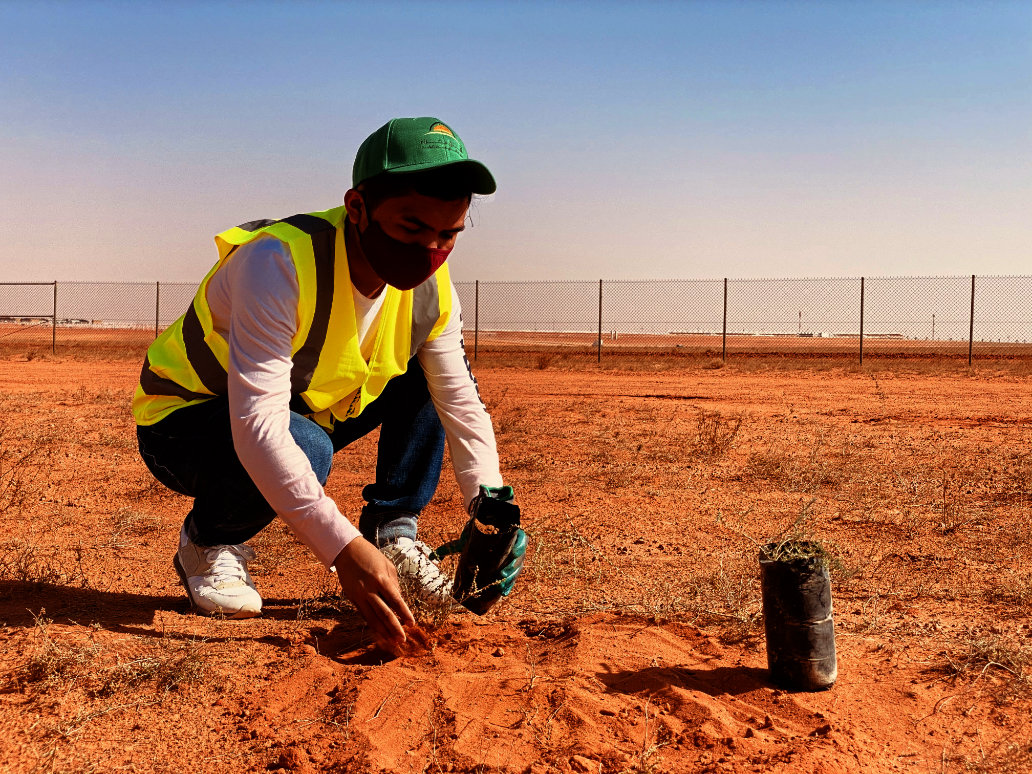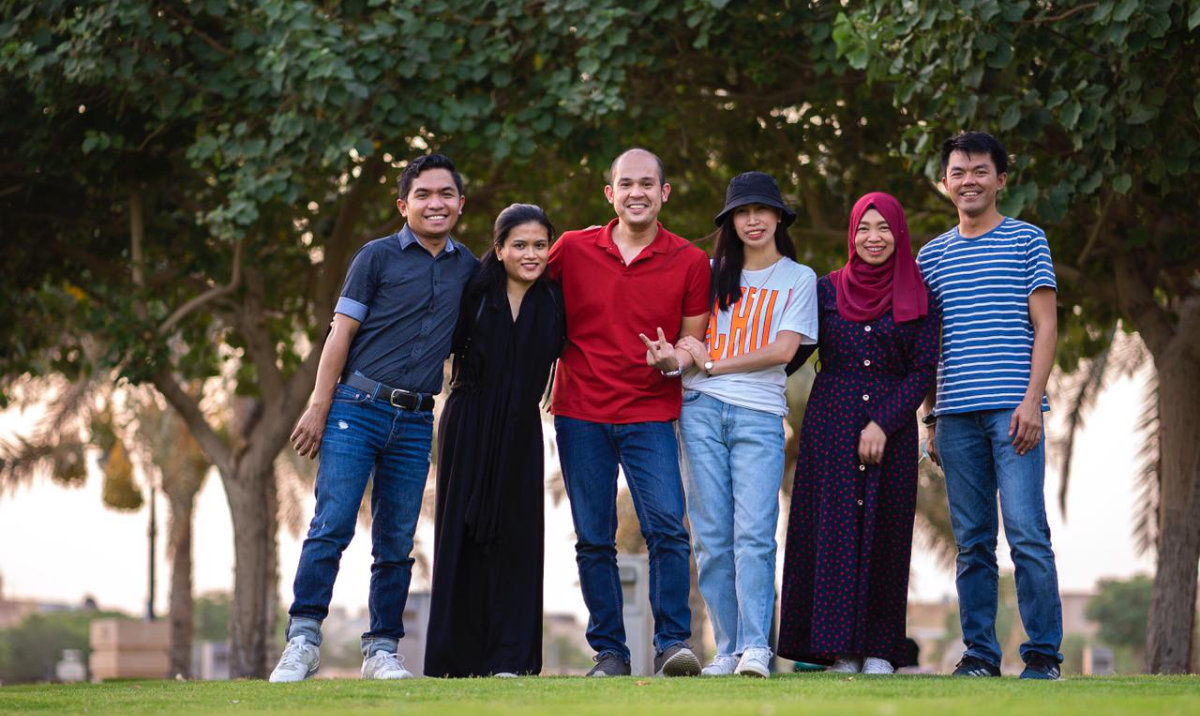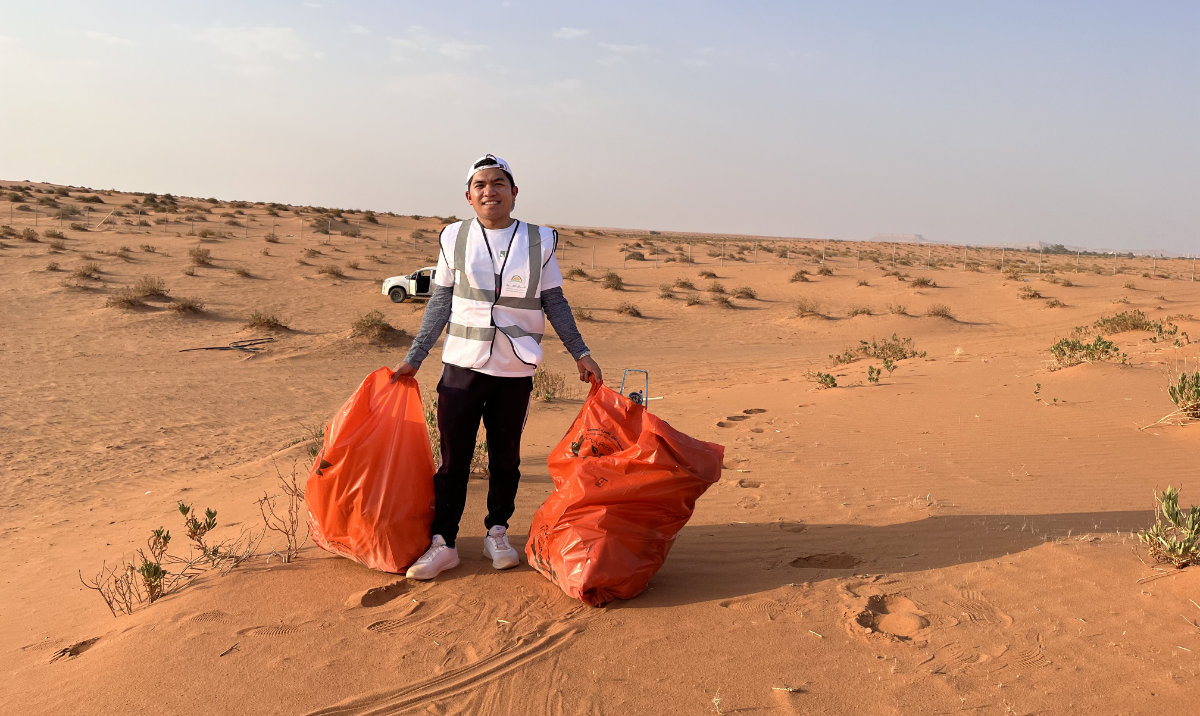JEDDAH: Every Friday before the break of dawn, Jimrey Buntas Dapin boards a bus with his group and travels to the deserts in Riyadh to pick up trash and plant trees in support of the Saudi Green Initiative.
Dapin, 29, is one of five co-founders of the Filipinos for the Saudi Green Initiative, a group set up in 2020 after being inspired by the work of other volunteer bodies, the Environmental Green Horizons Society and Green Daqla.
While the Saudi Green Initiative seeks to combat climate change and improve the quality of life for future generations, Dapin and his group found that their volunteer work also allows them to give back to Saudi Arabia.
“Working in Saudi Arabia has given me a good life here, and it has made my family’s lifestyle better back home in the Philippines. Thus, I feel the responsibility to give back to society,” said Dapin.
“My simple way of giving back to the society was tree planting and desert cleanup. We live here in the same space and ecosystem, so it’s everyone’s responsibility.”

Dapin, who works at a Riyadh-based company, is also a licensed social studies teacher. He encourages his students and peers to “participate in social and civic responsibilities.”
With all major objectives of the Kingdom aligned with Vision 2030, the Filipinos are using the year as a number to reach by each member — in terms of bags of trash collected and trees planted.
As of October, the group has 200 volunteers, collected 356 bags of trash, and planted 100 trees. They have held more than 10 cleanup drives in Heet Caves Park, Sha’ib Luha, and in other southern parts of Riyadh. During one of their recent trips, the group collected 3,000 plastic bottles in just five hours from the Red Sand area. All the trash collected is delivered to a local recycling facility.
“For cleanup drives, we enquire from our friends about the public places and research the location before embarking on the trip,” said Dapin.

Dapin said they started with just a handful of community members passionate about the environment, but pictures of their work on Twitter attracted attention and traction.
One of people who saw the social media posts was Mary Abigail Pajarillo, who works as a public diplomacy assistant at the Philippine Embassy in the Kingdom. “I have been residing in the Kingdom since I was three years old. For me, (the) Kingdom is my first home. I saw one of the posts of Jimrey on Twitter, and it piqued my interest since I was not aware that a group of Filipinos was volunteering for such an activity. Whenever I’m free, I’m always ready to join.”
For Reine Baquiano, a Filipino engineer, joining the group was also an introduction to social work. “Volunteering is a first for me and I have grown to enjoy it and learn as I go with the process.”

Dapin said it takes him and his team a week to plan a trip that comprises conducting meetings with authorities, making travel arrangements, shopping for trash bags, gloves, food and water for the attendees, and creating social media posts pre- and post-trip while juggling full-time jobs.
“It’s all commitment and love for the environment here in the Kingdom.”
Once everything is set, volunteers “wake up 3 a.m. every weekend to do their part for their home, Saudi Arabia.”
SAPTCO, a transport company, provides free transport for the group as part of its social responsibility program.
Several good Samaritans and organizations including Tadweer, Dunkin Donuts and Romansiah offer support to the group.
Their work has garnered significant praise on Twitter from Saudis. While overwhelmed with all the support and encouragement, Dapin believes “that caring and protecting the environment is everyone’s responsibility not just the citizens and government.”



































